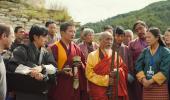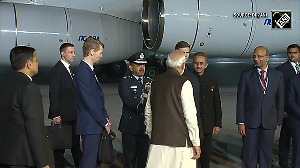'Usually, we are always worried that we are missing out something in life.'
'We are very keen for the audience to have this as a cinema experience in theatres.'
'You get the rare chance to be patient.'
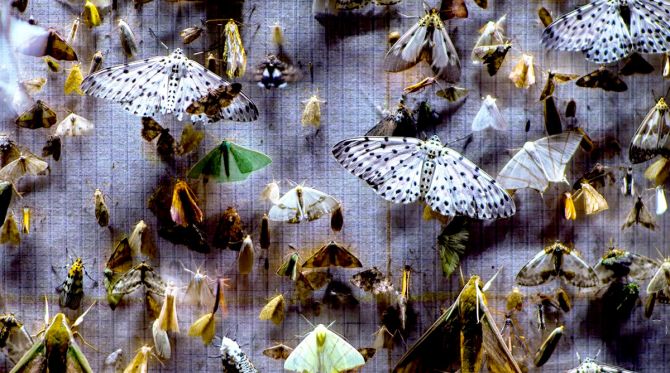
In the past couple of years, three Indian documentaries have wowed audiences and won awards at the Sundance Film Festival: Writing with Fire, All That Breathes and Against the Tide.
It is becoming an annual event and this year was no different.
Last month, Delhi-based film-makers Anupama Srinivasan and Anirban Dutta brought their documentary Nocturnes to Sundance, where it won the World Cinema Documentary Special Jury Award for Craft.
The jury citation read: 'The images and sound in this film immediately invoke in the audience a meditative state as they enter the film's world, at the same time bringing a laser focus to the film's main subject. The confidence of the cinematography and sound design in building this story is part of its power and allure.'
Nocturnes explores the work of ecologist Mansi Mungee, who focuses on the lives of moths in the forests of Arunachal Pradesh.
Mungee, who will soon join the faculty of Azim Premji University, has been studying moths for years. In the film, she often appears with her assistant Bicki, who is from the Bugun indigenous community.
In the film, they put up a board in the forest with lights every night. The lights attract hundreds of colourful moths, large and small. Mungee and Bicki then take pictures of the moths. It is a life dedicated to understanding insects in a remote part of India.
But Nocturnes is not as much about how Mungee works. It is much more about the moths themselves and how the two film-makers and their award-winning cinematographer Satya Rai Nagpaul (Anhey Gorhey Da Daan, Chauthi Koot and Aligarh) view them.
Dutta and Srinivasan have been working together for almost a decade. Last year, they competed another documentary Flickering Lights, which was shown at the International Documentary Film Festival in Amsterdam.
Dutta and Srinivasan tell Aseem Chhabra, "Humans are very much part of the film, it's not a character-driven film. We keep shifting the gaze to the way we are experiencing the forest and the moths, and keep the humans as part of the natural landscape."
Congratulations to both of you. I loved your film.
How did you meet Mansi Mungee? And how did you decide to follow her all the way up to Arunachal Pradesh?
AnirbanL We were doing some work in Uttarkashi in the Western Himalayas, and Mansi was also working there.
We were hungry, so we decided to eat at a dhaba. She was sitting next to us.
We started to talk, and she said this is nothing, I work in this incredible forest in Arunachal Pradesh.
She described what she does, that she puts up this screen and hundreds of moths come at night. Anu and I looked at each other said there is a film here.
Anupama: We got charmed by her description and decided to visit the West Kameng district in Arunachal Pradesh.

This was without getting any funding to make the film?
Anirban: No. We just got thrilled by what she told us, the image she described of the moths on the big screen.
All the colours and the designs.
Frankly, we didn't know anything about moths before this but it sounded so cinematic.
That was the starting point, in 2019.
We shot through the pandemic, off and on.
Did the pandemic spread in a big way in the forest of Arunachal?
Anirban: At one point, there was a directive from the central government that human beings could not go to the forest because there was a fear of COVID being passed on from the humans to animals. There were some periods we could not travel.
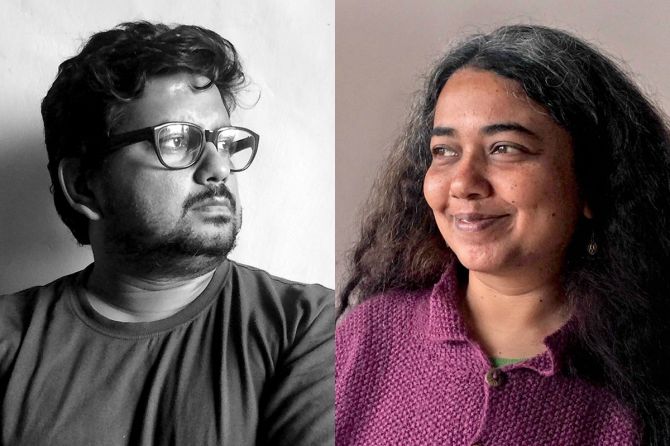
So you met Mansi at a dhaba and went to see the work she does. And then you came back, got some funding and hired Satya Rai Nagpaul?
Anupama: Satya came on board from the first schedule when we went to do the recce. He's very interested in entomology and is a close friend of mine from the FTII (Film and Television Institute of India).
We started and what evolved was refining what we were trying to do.
One thread was what Mansi and her team were doing, which was very interesting.
But our idea was also to try and communicate how we were feeling.
How do we question an anthropogenic gaze of the world and how do we not keep the human being at the centre?
So while humans are very much part of the film, it's not a character-driven film.
We keep shifting the gaze to the way we are experiencing the forest and the moths, and keep the humans as part of the natural landscape.
We wanted to keep equal attention of the humans and the moths, including the duration of how much we cover them.
The challenge was how to attain the balance and how to find a cinematic expression which still encourage humans to watch it. After all, the audience for the film will be human beings, so we had to create the right cinematic mood for them to fall in love with moths.
Anirban: The idea was only the starting point.
We wanted to create an experience.
We attempted to do that through temporality use of time and to create a certain kind of looking that is through the gaze. And temporality and gaze are very closely linked to what you hear, which is the sound.
When you pay more attention to sound, you see more.
When the shot is held longer and you hear the sound, your gaze is guided.
So from the beginning, you developed a sense of what the film is about. There are so many moments when the camera is still, just capturing the moths fluttering their wings on the board. Nothing is spoken, we just hear the sounds of the forests, and it is so hypnotic and meditative.
What's amazing is this happens without any narrative being written. There is no beginning, middle or end of the film, no hero or villain. Even in documentaries, you have characters as such. You are able to hold our attention. I found it breathtaking at times, and I was watching it on my laptop. In movie theatres, people must have had such a visual sensory experience.
Anupama: I think it was a process that got more and more refined.
In the first schedule, we interviewed the characters.
But when we looked at the material, we asked what was it that we were responding to? That's when we decided we don't want to hear Mansi talk about her work. It was through the subsequent trips that the core of the idea evolved.
Normally, in a documentary, one would follow the characters. This was not that kind of a film.
We were most interested in the rigor and the repetition of Mansi's work.
It was trying to find what every moth night would reveal. In the edit, we kept each moth night for a special reason.
There were small delicate moments we kept, just enough information to keep the viewer in the film. We were sure not to make it didactic, a science lesson.
Our editor Yaël Bitton is based in Paris and she got the film right away. She said your film is not about the human characters, but about the way of looking at the world.
I like what Mansi says that there are these gorgeous coloured creatures in the middle of the jungle, but who is going to look at this beauty? There are no answers to how nature works, but it's so spectacular.
At what stage did you think you had enough material to end the film?
Anirban: Something we ask ourselves is why we make documentary films.
One reason is to follow reality but what is more important is how to interpret the reality with our own intervention.
As film-makers, we feel that we make our own interventions.
We were editing as we were going along. At one point, we felt we had enough material from what we were looking at, and we didn't have more to look for.
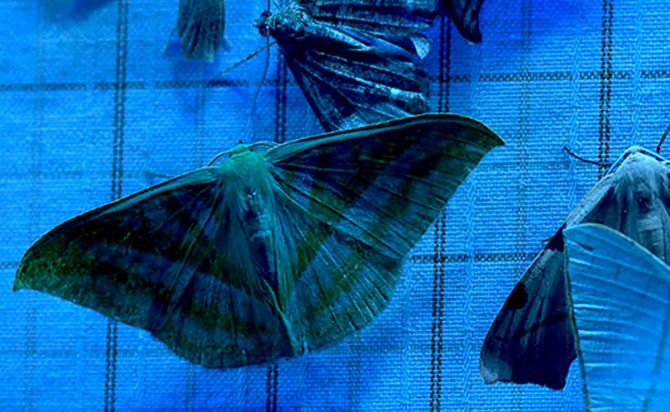
I am very scared of moths. Even if one moth comes in my room, I can't sleep. You have shots of moths landing on Bicki's face and he stays so calm. It was amazing.
But the calmness you bring with your camerawork, the sound and the way the fog envelopes the forest is just haunting. It cleans your soul.
What is the message you are trying to give us with this film?
Anupama: You got the message.
While editing, even though we were in a frenzy, we felt the same as you did.
We would feel our heartbeats becoming normal, our minds becoming calmer. It happened with our editor. It happened with us. And it happened every day.
Now we have experienced it with the audience at Sundance. Yesterday, three Argentinian students came up and said that the film was like attending a meditation session.
We think that if we are faster, we get better. This film makes you become patient. It is the gift you get if you are patient. Because we allow ourselves to pay attention.
Usually, we are always worried that we are missing out something in life.
But we are very keen for the audience to have this as a cinema experience in theatres. You get the rare chance to be patient.




